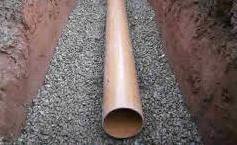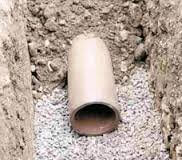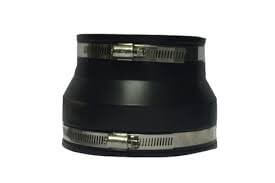Comparing PVC Drainage To Other Materials
Until the last quarter of the 20th Century and before the widespread adoption of plastic as a drainage material, underground drainage pipes and fittings were made from vitreous clay, cast iron, pitch fibre or asbestos cement. Whilst the majority of the products are no longer used for this application, clay drainage is still produced in the UK and it is still favoured by some developers.


So Which Is Best - Plastic or Clay Drainage
Both types of materials have their supporters, but plastic is by far the most popular underground drainage material in use today in the UK construction industry. PVC pipes are much lighter and hence easier to handle on site - builders merchants favour it for exactly the same reason. PVC is a hardy material – it is not fragile and unlike clay it is actually quite difficult to damage, with an excellent strength to weight ratio. Plastic pipes are simple to cut, needing nothing more than a fine-toothed saw whereas clay drainage requires the use of cutting discs or more specialist tools.
PVC Drainage pipe has smooth walls, with minimal friction delivering excellent flow rates when compared to the natural finished surface of a clayware pipe. Whilst all PVC manufacturers’ fittings and pipes differ in size by fractions of millimetres, all British Standard approved plastic drainage systems are manufactured within specific size tolerances, meaning that all such approved systems can be inter-connected without the need for adaptors, saving any confusion when connecting into existing systems.
Does Clay Drainage Have Any Advantages Over PVC?
Because it is such a heavy material, clay pipes do not deform when buried underground, meaning that less bedding material (pea shingle) is required. Whilst plastic is a strong material, the relative thinness of the pipe wall when compared to clay means that more shingle is needed as bedding and backfill material.
Clay could also be considered to be a more “green” material if this is a consideration in your build project.
Can New PVC Drainage Pipes Be Connected To An Old Clay System?
Yes. There are various ways of achieving this but the simplest way is to use our DS103 flexible connector, which utilises stainless steel clips to provide a permanent watertight seal.

Please take two minutes to watch our short instructional video on how to join PVC and Clay pipes together.
Items you will need
- Drainage Flexible Coupling Stepped - 160mm - 180mm to 180mm - 200mm£12.43 £14.92 £13.81 £16.57 Save 10%
- Drainage Flexible Coupling/ Adaptor Stepped - 108-122mm to 121-137mm£4.55 £5.46 £5.05 £6.06 Save 10%
-
-







